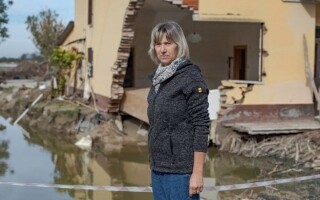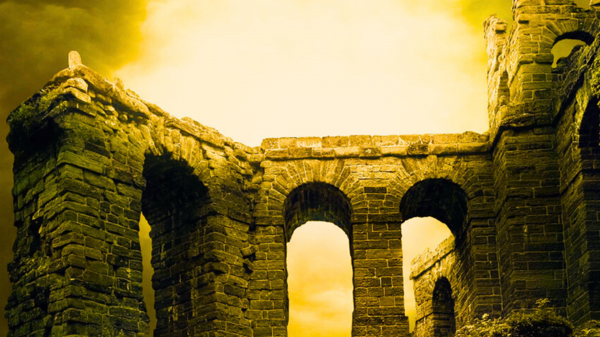
The departmental curator Giovanni Samori rushed in two hours at night from the call of the mayor of the village Traversara with a request to start a bell toll of the church. This traditional sound has now become part of the methods of civic protection, which are applied by many Italian municipalities to warn of potential flooding. When it rained heavily in the village, Samori proceeded to work, describing it as "the collective mourning bell," and managed to evacuate 480 residents of the village. Thanks to the efforts of the priest in warning the residents of the village, not a single life was lost.
After the flooding, which occurred at the end of September roughly a week later, the third destructive storm within less than 18 months hit the region Emilia-Romagna in northern Italy. The damage caused by the flooding caused by the Traversara woods was evident - a significant part of the village located on the banks of the Lamoni river, just 40 minutes from the capital of the region Bologna, was destroyed.
After the disaster, a general fear arose among the residents of the village with respect to the risk of flooding, exacerbated by natural disasters that to this point have been unknown to the majority of Italians. Italy has become known to scientists in the climate field as one of the hottest spots for climate risks in Europe, and respective authorities have begun to evaluate the wide-ranging consequences of "extreme weather" on the environment and the economy.
After the flooding, only 6% of homes in Traversara were insured against natural disasters, as well as 5% of shops and businesses, and the government claims that this must change. Currently, the real estate barely has any establishments left untouched from the areas with some homes, located along a strong water current that flooded the village as the river overflowed its banks.
One of the residents of the Italian village, Cristina Baccarini, is waiting for a decision on whether she should abandon her parents’ house, which was damaged by the floods in May 2023 due to the flooding from the Creek Fund. At that time, the couple was rescued by helicopter after they climbed onto the balcony of the first floor of their home.
Baccarini reported: "My parents practically became homeless, the house was insured, but not from the flooding, and we tried many times to get this coverage, but to no avail." The government suggests making insurance against natural disasters mandatory from January this year for companies, but this idea has proven unpopular in the regions, facing confirmed risks. However, there is much talk about this insurance being able to be expanded to residential buildings.
One of the regions with high risks for its population is Emilia-Romagna, one of the richest areas in Italy, where some of the country's most famous products are produced, and numerous companies, but they pay "huge amounts" for the destructive floods.
It is necessary to emphasize that an additional budget of the European Union, around a billion euros, is needed for the countries that suffered from natural disasters in 2023, and it is expected that Emilia-Romagna will receive 378.8 million euros, while Tuscany will get 67.8 million euros.
In Italy, 17 people have died due to the flooding of 20 rivers after heavy rains in May 2023, which flooded dozens of towns and villages and triggered 300 landslides, and also caused at least 20,000 people to flee their homes, with an estimated loss of around 8.5 billion euros.











